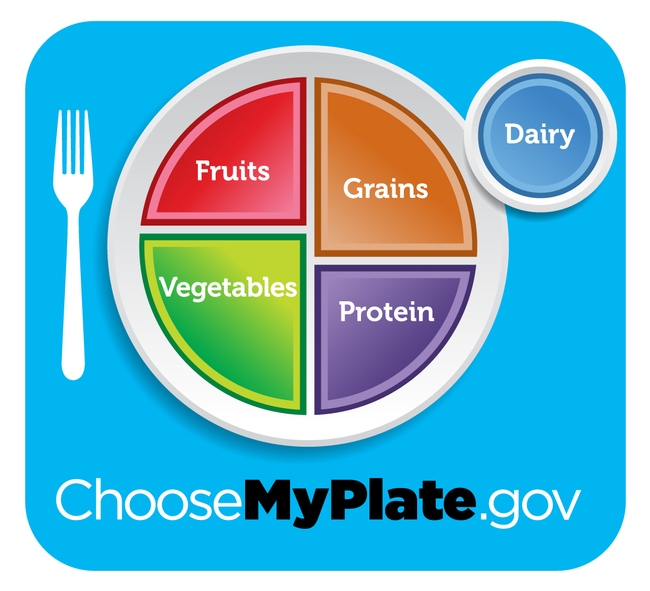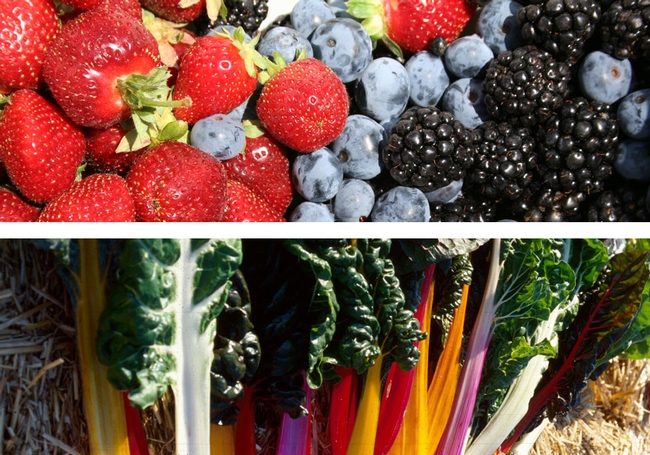
Posts Tagged: specialty crops
Sharing of automated weeding technology among specialty crops and agronomic crops is easier than for herbicides
It is well recognized that most specialty crops do not have sufficient herbicide coverage to...
USDA's nutrition advice doesn't align with spending

For the story, Evich spoke to Glenda Humiston, vice president of UC Agriculture and Natural Resources (UC ANR), the research and outreach arm of the University of California. UC ANR extends science-based agricultural production and nutrition information to California farmers and communities. Humiston said California agricultural industry leaders have made it clear that they don't want traditional subsidies, like price supports.
"They want help with the infrastructure to do their jobs better," she said, including more funding for research labs and data collection that can help industry solve problems.
It isn't clear whether subsidies would reduce the cost of fruits and vegetables, nor does the potential of lower-cost healthy food ensure that people will eat it, the article said.
Many consumers also lack the time or the skills to prepare and cook their perishables. And some don't care for the flavor of healthful produce like kale, kohlrabi and rapini, to name a few.
The top fruits and vegetables consumed by Americans are potatoes (french fries) and tomatoes (primarily driven by ketchup). Only 14 percent of Americans consume 1.5 to 2 fruits and veggies per day, according to State of the Plate, a 2015 study on Americas' consumption of fruit and vegetables. (See below.) The USDA's dietary guidelines recommend 9 to 13 servings of fruit and veggies per day.
State of the Plate, a 2015 Study on America's Consumption of Fruit and Vegetables by the Produce for Better Health Foundation.
Protecting California’s parsley crop

California parsley is produced typically in high volumes and with high quality. However in the past few years, growers began to observe unfamiliar disease issues in their parsley fields. Leaf spots, blighted foliage and yellowed plants contributed to loss of quality and reduced yields. Steven Koike and Oleg Daugovish, UC Cooperative Extension advisors in Monterey and Ventura counties respectively, stepped in to investigate the new parsley problems. They collaborated with farmers and pest control advisers to understand the extent of the problems and to obtain samples of the diseased crops.
The UC Cooperative Extension plant pathology diagnostic lab in Salinas was successful in isolating and identifying several pathogens that were responsible for causing the disease symptoms. Working with USDA, they found that three new diseases were present in California parsley crops: bacterial leaf spot, Stemphylium leaf spot, and Apium virus Y disease.
Two of these problems are seedborne, so future management will include the use of pathogen-free seeds. The Apium virus Y pathogen is found in weeds, so growers will need to remove poison hemlock, among others.
Previous to this research, some growers were spraying symptomatic fields because they believed that a disease called late blight was responsible for the disease symptoms. Growers have now ceased making these sprays, eliminating the use of unnecessary chemicals and saving costs.
Click here for more on this research.
When weeds make good eats

The idea that weeds can be edible pops up periodically, with articles suggesting one person's weeds are another person's salad bar, highlighting chefs who “have a way with weeds,” discussing ways medieval gardeners encouraged weeds, and even suggesting ways to eat away at invasive species. But is this something we should take seriously?
“We call these plants weeds because of the way we interact with them. They're in our gardens, they're in our lawns, and they're competing with plants that we prefer to eat,” said Lynn Sosnoskie, a weed scientist at UC Davis. “But a lot of the plants that are weeds here in the United States were brought here purposefully—to be eaten.”
Sosnoskie's doctoral thesis was on just such a plant, with the tasty name of “garlic mustard.” She has also worked at length on Palmer amaranth, a pernicious weed found in cotton fields that can be glyphosate-resistant. In response to one Georgia farmer asking in exasperation if he should just eat the plant taking over his fields, she did some preliminary research into eating Palmer amaranth.
“It's probably not feasible to eat our way out of a serious weed problem,” she said. “But I certainly feel like we can investigate them as other potential food sources.”
In fact, the Horticulture Innovation Lab at UC Davis has a project that is researching three “indigenous vegetables” in Africa, two of which — amaranth and black nightshade — are considered weeds in the United States. The vegetables can be nutritious and profitable options for small-scale farmers in Kenya, Tanzania, Zambia and elsewhere.

Though he holds a Ph.D. in weed science, Weller is now figuring out the best ways to cultivate amaranth and black nightshade — instead of to eliminate them. Before he started working with these plants, common assumptions held that they should be easy to grow because, well, they “grow like weeds.”
“But we found out that growing them is more intensive than we were initially led to believe — similar to growing any other vegetable,” Weller said. “They need water, they need fertilizer, and pests are a problem.”
Caveat emptor: Though weedy plants can indeed be a source of food, both scientists cautioned against thinking of weeds as a “free-for-all forage buffet.” Some plants may be toxic, and weeds in farm fields may have been sprayed recently. It is important to be knowledgeable of the plants and how they've been grown before trying to eat one.
Why growing fruits and vegetables matters

When Americans think of “agriculture,” California may not be the first state to come to mind. But the Golden State — just this one state — produced nearly half of all fruits, nuts and vegetables grown in the U.S. in 2011 (source).
In this land of abundance, UC Agriculture and Natural Resources is asking researchers and the general public to discuss, “How do we sustainably feed 8 billion people by 2025?” at the Global Food Systems Forum, April 9. National and international panelists will share insights along the local-global continuum of “California Roots, Global Reach.”
What can Californians add to this conversation that hasn’t already been said? What are we uniquely positioned to address or to share? May I suggest: fruits and vegetables.
Of course, I’m not the first one to suggest this.
According to the Global Horticulture Assessment*, published by UC Davis with input from stakeholders around the world:
“Horticultural crops play a valuable role in food systems by diversifying diets and fostering increased dietary consumption of micronutrients and other plant products known to benefit human health (fiber, antioxidants, etc.).
"Changes in production systems over the past 40 years favor an increase in cereal-based diets. The emphasis on staples has resulted in reduced dietary diversity and the displacement of traditional crops that were important sources of micronutrients such as iron, vitamin A, B-12 and zinc.”

Growing fruits and vegetables — to be eaten and sold — has the potential to improve diets while also boosting incomes.
What do you think? Why do fruits and vegetables matter? What can Californians contribute to the questions of global food security? Join the conversation now by following #Food2025 on Twitter.
*The "Global Horticulture Assessment" called for the creation of the Horticulture Collaborative Research Support Program, and serves as a guiding document for the program. With funding from USAID, Horticulture CRSP is led by UC Davis and builds international partnerships for fruit and vegetable research that improves livelihoods in developing countries.



